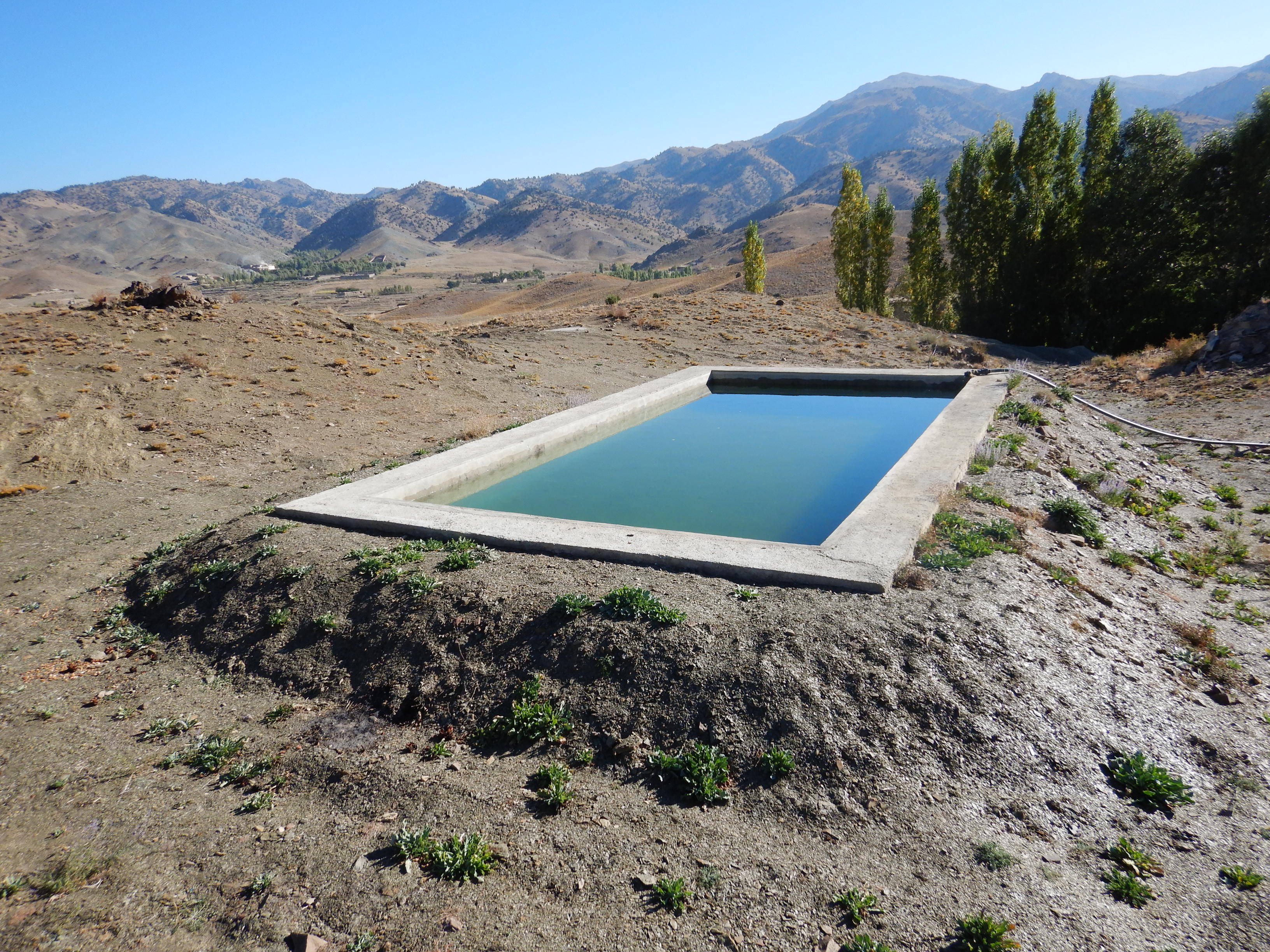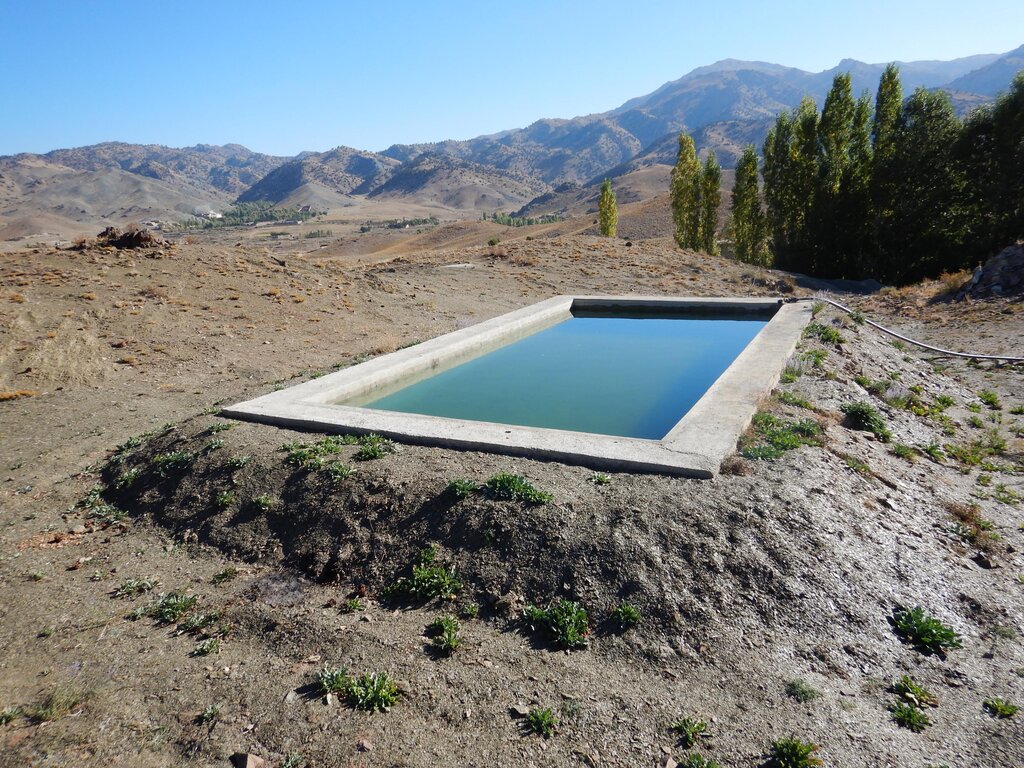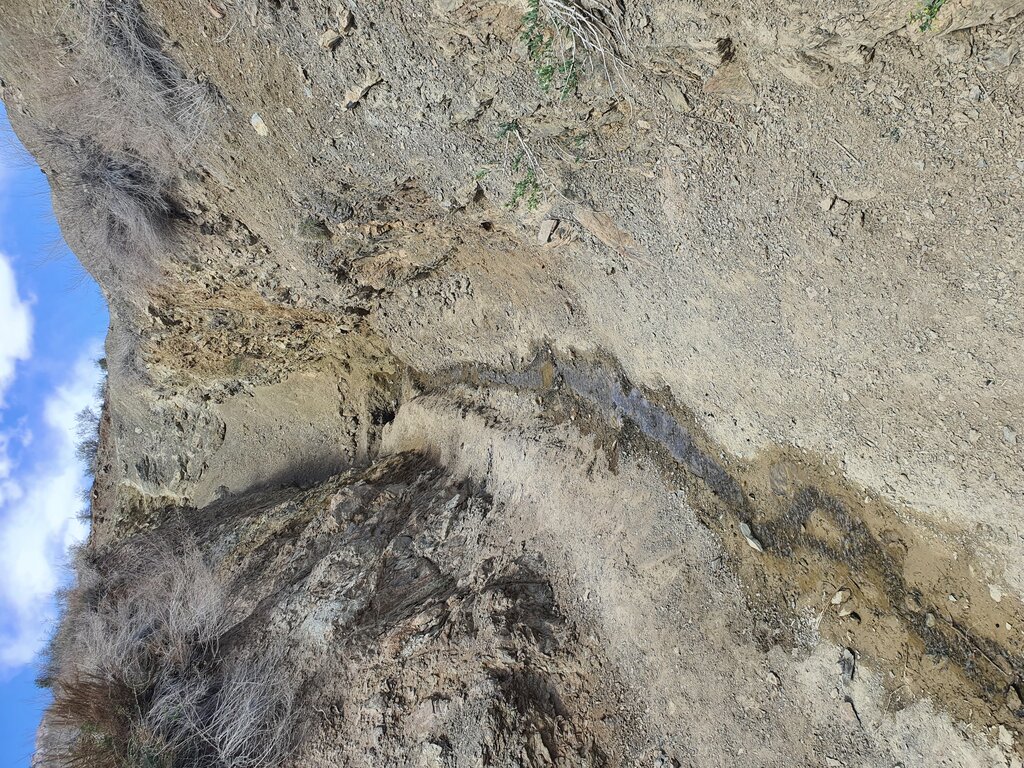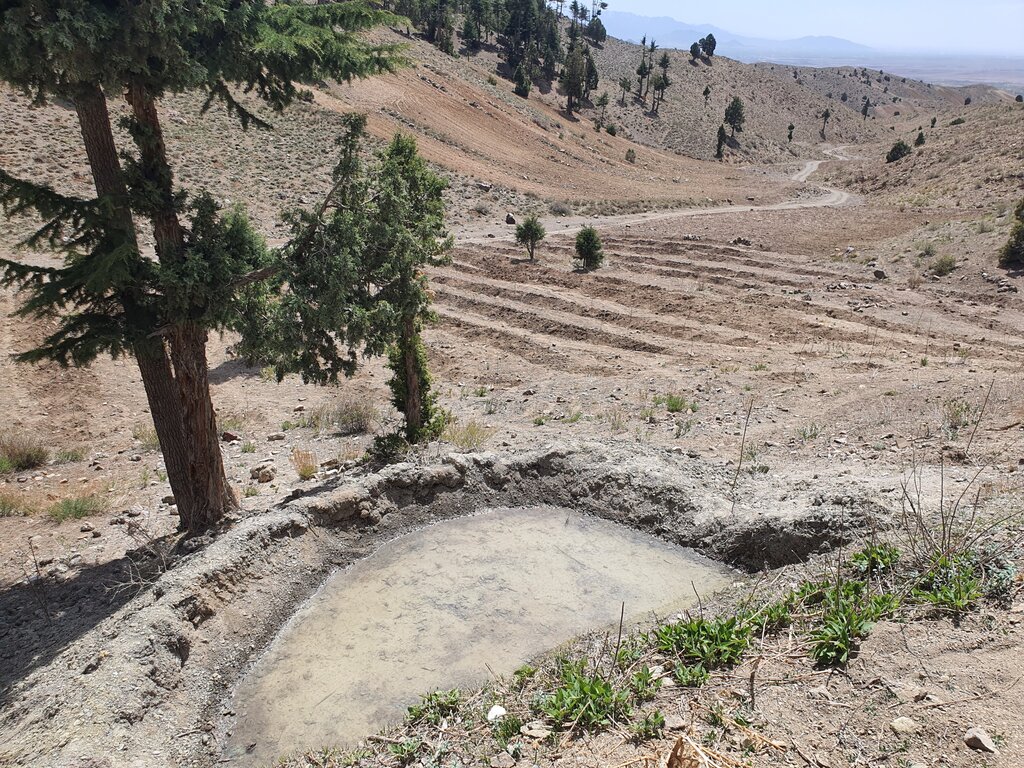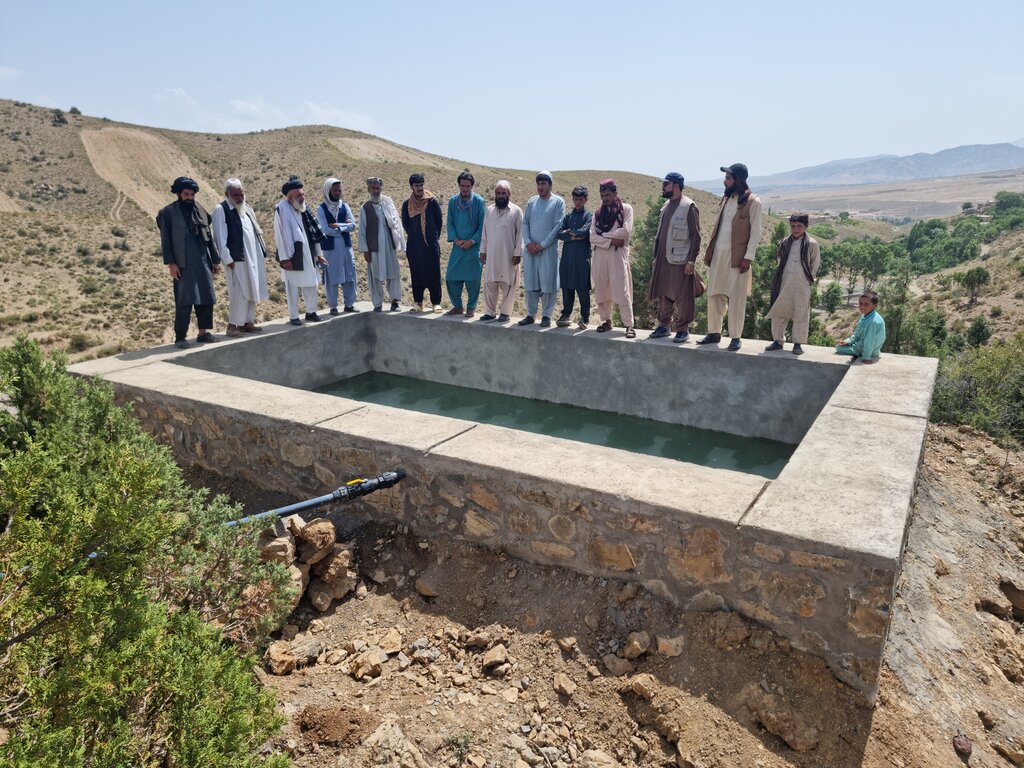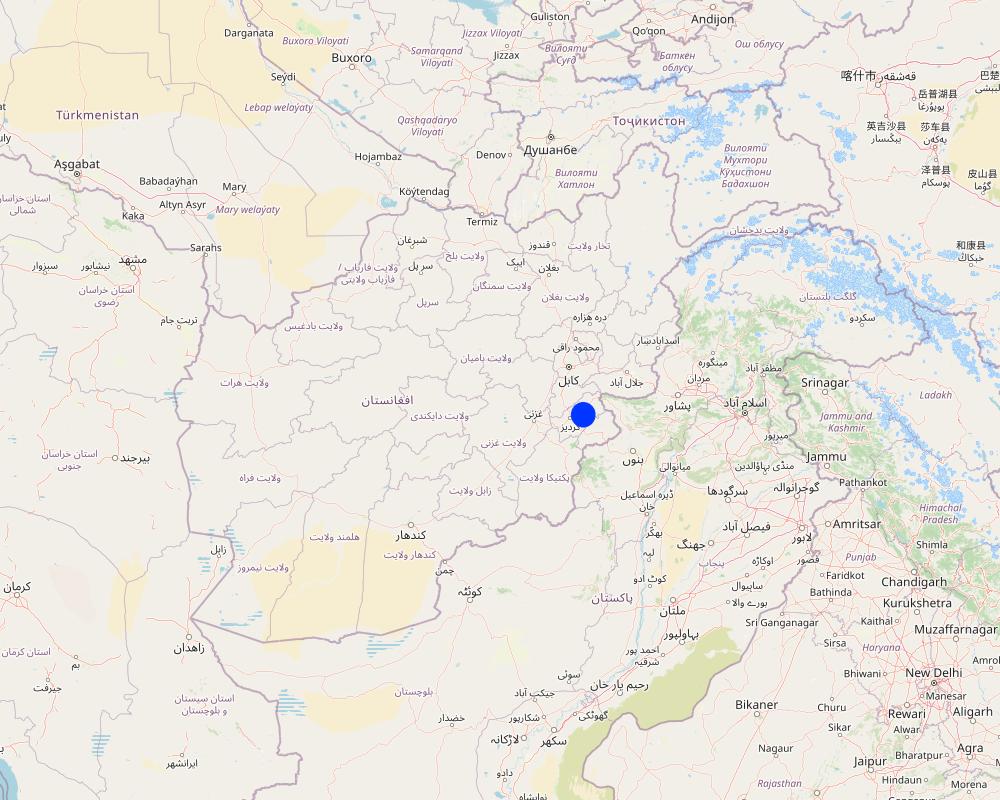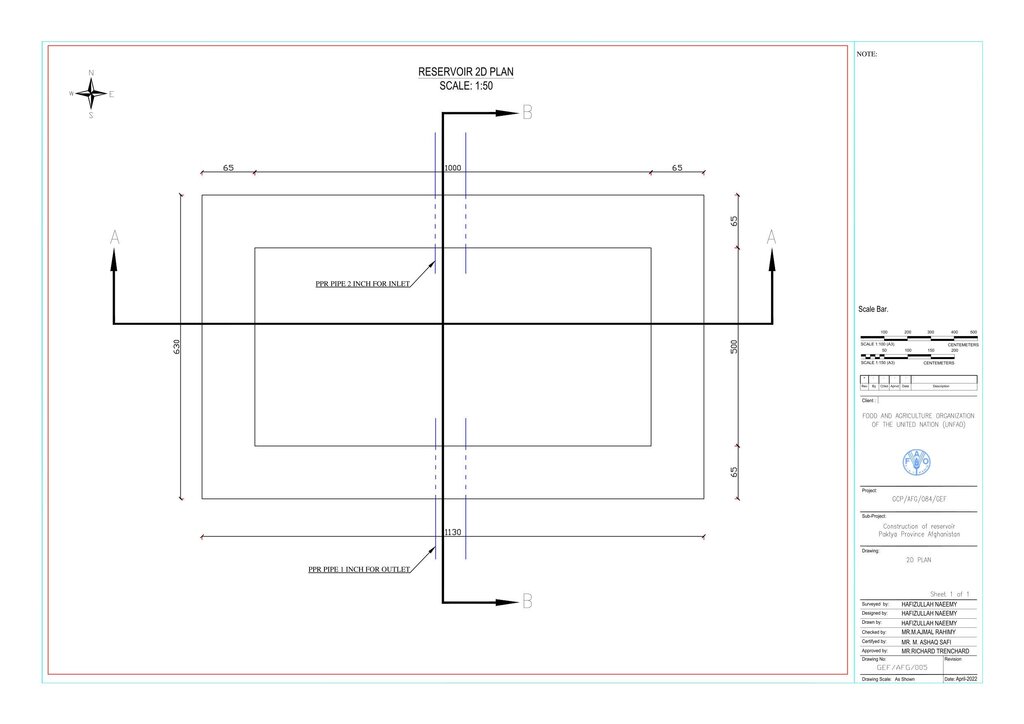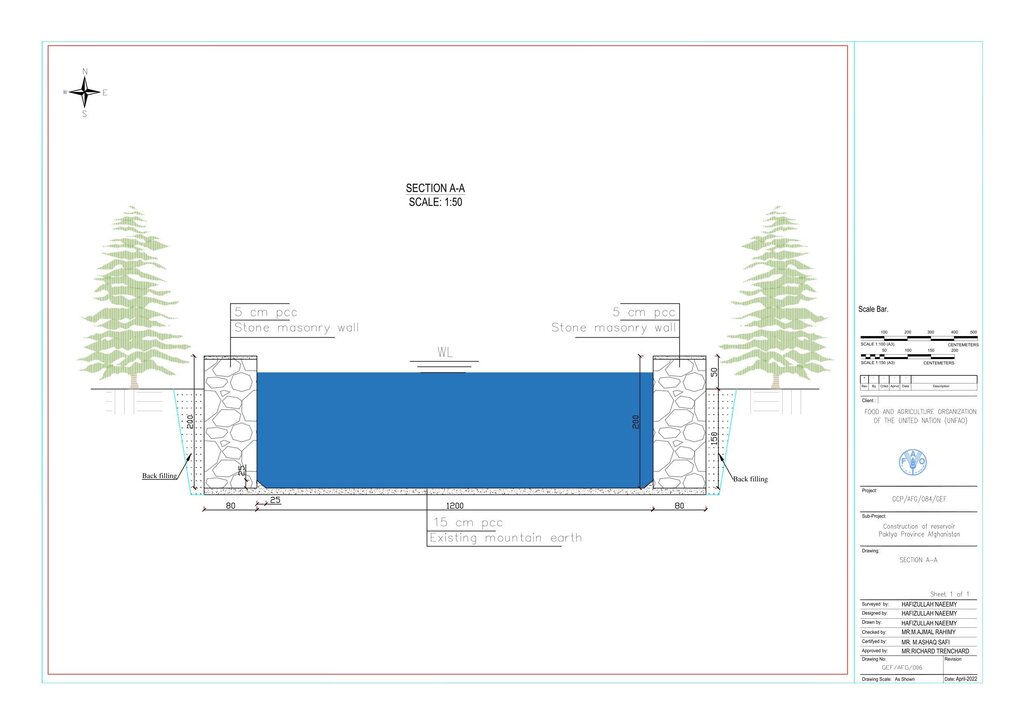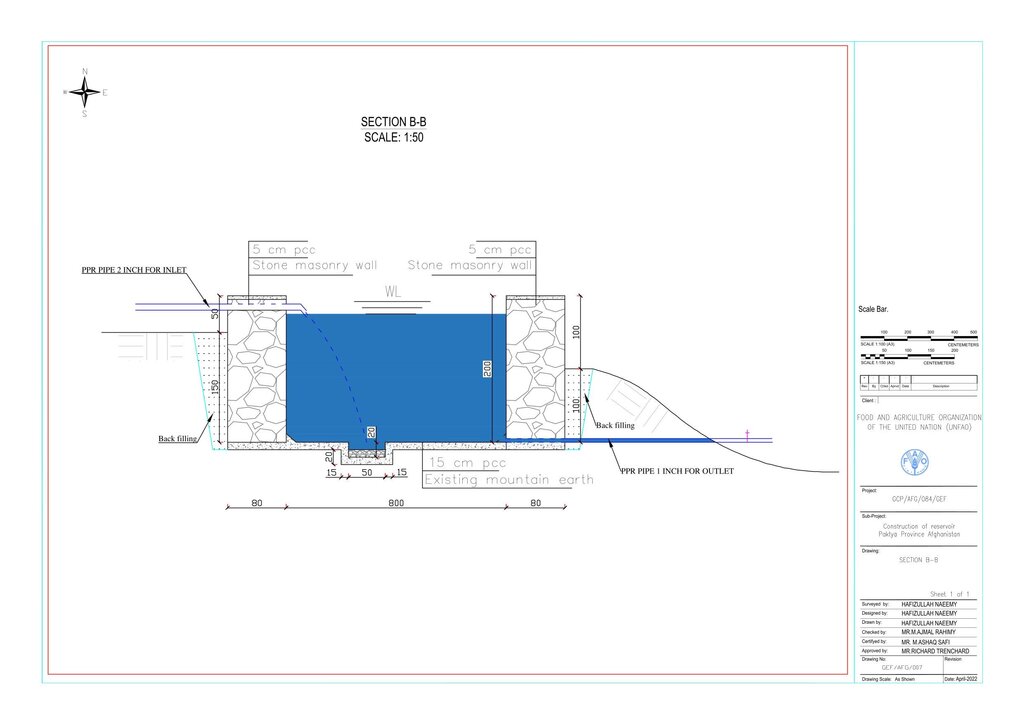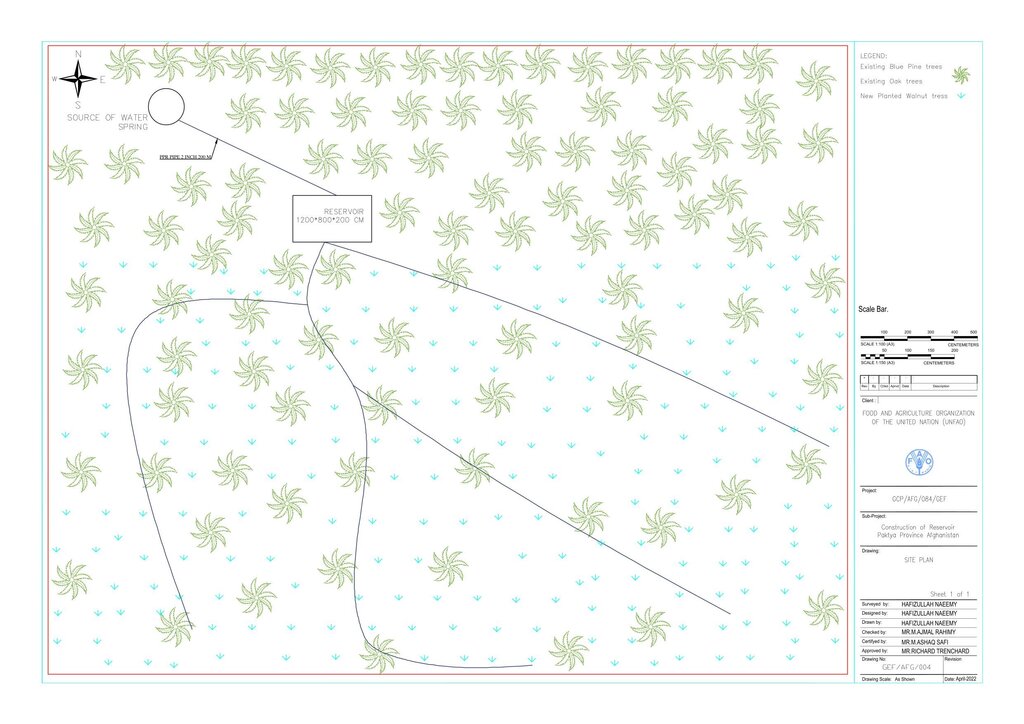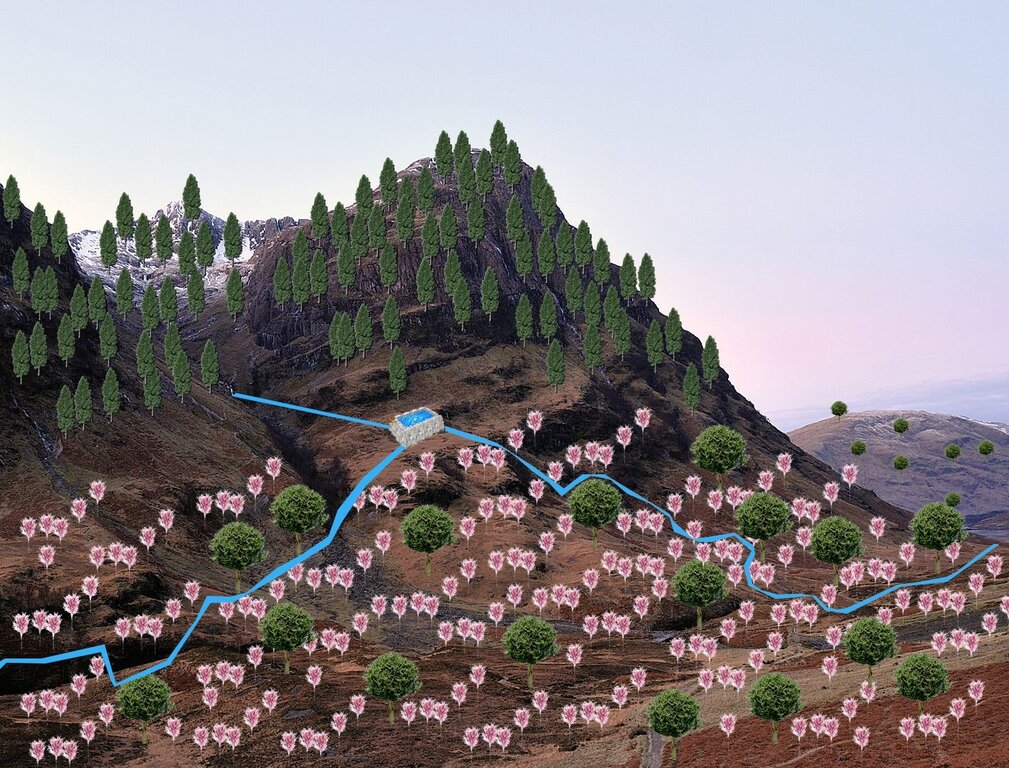Gravity Irrigation for enhancing Community-Based Restoration efforts in the degraded forests of Paktya [阿富汗]
- 创建:
- 更新:
- 编制者: Mohammad Wazir Ahmadzai
- 编辑者: Mir Wali Khan Lakanwal, Mohammad Mustafa Sahebzada, Mohammad Ajmal Rahimy
- 审查者: Rima Mekdaschi Studer, Illias Animon, Muhammad Ishaq Safi, Megha bajaj
Obu Zakhira
technologies_7481 - 阿富汗
查看章节
全部展开 全部收起1. 一般信息
1.2 参与该技术评估和文件编制的资源人员和机构的联系方式
有助于对技术进行记录/评估的项目名称(如相关)
Community-based sustainable land and forest management in Afghanistan有助于对技术进行记录/评估的机构名称(如相关)
FAO Afghanistan (FAO Afghanistan) - 阿富汗1.3 关于使用通过WOCAT记录的数据的条件
编制者和关键资源人员接受有关使用通过WOCAT记录数据的条件。:
是
1.4 所述技术的可持续性声明
这里所描述的技术在土地退化方面是否存在问题,导致无法被认为是一种可持续的土地管理技术?:
否
2. SLM技术的说明
2.1 技术简介
技术定义:
Using a gravity-irrigation system, spring water is diverted to fill reservoirs and then distributed to fields for the restoration of degraded forest areas, with the active involvement of local communities and a focus on the sustainable use of water resources (spring water).
2.2 技术的详细说明
说明:
The Paktya province in Afghanistan, known for its mountainous terrain and rich forests of pine nuts deodar, cedar, and conifers, faces severe challenges. Most water in the province comes from rivers, springs, and tube wells, with high mountains acting as natural reservoirs. Unfortunately, many traditional water sources have been destroyed over decades of conflict and natural drought, forcing farmers to rely on costly tube wells for irrigation.
To support sustainable water management in the mountainous areas of Ahmad Aba and Sayed Karam districts, 60 water reservoirs with a total storage capacity of 6,000 m³ were constructed. The volume of individual reservoirs varies depending on the availability and flow of upstream spring water ranging from 36 m³ to 192 m³.
Water is diverted from a small intake near the source and delivered to the reservoir inlet through a 2-inch Polyvinyl Chloride (PVC) pipe. For irrigation of the restored areas, the outlets from the reservoirs are connected to 1-inch PVC pipes for distributing water to various plantation sites.
This technology is applied in a natural environment and is designed to support environmental sustainability by recharging the groundwater table, as water is harvested into reservoirs, it can infiltrate through the side walls and bottom. This percolation process contributes to the natural hydrological cycle, harvesting surplus water (water evaporate or percolating into atmosphere or soil) into reservoirs for irrigation of planted saplings, and extending existing forest boundaries.
The system enables the local community to sustainably manage and utilize spring water for gravity-based irrigation of restored areas, while also supporting the expansion of forested land through sapling plantation.
Before constructing the reservoirs, a feasibility survey of the water source (the spring) was conducted to verify the perennial availability of water and to determine the optimal distance between the spring and the designated reforestation sites. The preliminary selection of reservoir locations was based on key criteria including the year-round reliability of the water source, the size of the target reforestation area, and the discharge capacity of the spring. Excavation of the rocky mountain earth was carried out using a hand excavator as per the specified requirements as per technical drawing and approved design. The stone masonry work was completed using random rubble coursed stone with a cement-sand mortar mix (1:2, Type A). As per the design, Plain Cement Concrete (PCC M20) was applied to the top of the stone masonry and on all floors of the reservoirs. A 20 mm thick plastering was carried out on the internal walls using cement-sand mix (1:2). The external walls were backfilled to a height of 1.5 meters.
The benefits of this gravity-fed irrigation technique include increased reforestation rates, reduced water loss due to evaporation and runoff, achieved by using closed piping systems instead of open channels, and improved water use efficiency. These improvements have led to higher sapling survival rates and better growth. Overall, the socio-economic and environmental conditions of rural populations have been improved. Additionally, the implementation of the gravity irrigation system has reduced the cost of restoring degraded forests.
As a low-cost, environmentally friendly technology, it allows for the efficient harvesting of spring water for irrigation, supports sapling planting for carbon sequestration, and helps mitigate the severe impacts of climate change.
2.3 技术照片
2.5 已应用该技术的、本评估所涵盖的国家/地区/地点
国家:
阿富汗
区域/州/省:
Paktya
有关地点的进一步说明:
Ahamd Aba and Sayed Karam district
具体说明该技术的分布:
- 均匀地分布在一个区域
技术现场是否位于永久保护区?:
是
注释:
The technology being applied in various location of forest areas, while in the map only two points highlighted in Ahmad Aba and Sayed Karam district of Paktya
However, 46 water reservoirs constructed in Sayed Karam, while 14 water reservoirs constructed in Ahmad Ab
Map
×2.6 实施日期
如果不知道确切的年份,请说明大概的日期:
- 不到10年前(最近)
2.7 技术介绍
详细说明该技术是如何引入的:
- 通过项目/外部干预
3. SLM技术的分类
3.1 该技术的主要目的
- 减少、预防、恢复土地退化
- 保护生态系统
- 结合其他技术保护流域/下游区域
- 保持/提高生物多样性
- 减缓气候变化及其影响
- 创造有益的经济影响
- 创造有益的社会影响
3.2 应用该技术的当前土地利用类型
同一土地单元内混合使用的土地::
否

森林/林地
- 植树造林
植树造林:说明树种的起源和组成:
- 单一栽培的本地品种
植树造林类型:
- 亚热带干林人工林 - 松树属
树木类型:
- 松树属
以上的树木是落叶树还是常绿树?:
- 混合落叶或常绿
产品和服务:
- 木材
- 薪材
- 水果和坚果
3.3 由于技术的实施,土地使用是否发生了变化?
由于技术的实施,土地使用是否发生了变化?:
- 否(继续问题3.4)
同一土地单元内混合使用的土地::
否
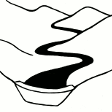
水道、水体、湿地
注释:
With the implementation of the technology, degraded land has been restored to forested areas through reforestation.
3.4 供水
该技术所应用土地的供水:
- 充分灌溉
3.5 该技术所属的SLM组
- 森林种植管理
- 灌溉管理(包括供水、排水)
- 地表水管理(泉、河、湖、海)
3.6 包含该技术的可持续土地管理措施
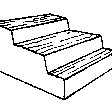
结构措施
- S5:大坝、集水斗、水池
3.7 该技术强调的主要土地退化类型
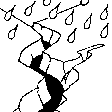
土壤水蚀
- Wt:表土流失/地表侵蚀
- Wg:冲沟侵蚀/沟蚀
3.8 防止、减少或恢复土地退化
具体数量名该技术与土地退化有关的目标:
- 减少土地退化
4. 技术规范、实施活动、投入和成本
4.1 该技术的技术图纸
技术规范(与技术图纸相关):
Technical drawing: indicated the details of the dimension of water reservoirs
作者:
Hafizullah Neemy
日期:
30/03/2022
4.2 有关投入和成本计算的一般信息
具体说明成本和投入是如何计算的:
- 每个技术区域
具体说明成本计算所用货币:
- 美元
注明雇用劳工的每日平均工资成本:
5
4.3 技术建立活动
| 活动 | 时间(季度) | |
|---|---|---|
| 1. | Excavation to build reservoirs | When construction work is possible |
| 2. | Back filling of all outside of reservoir through soil | After construction the reservoir |
| 3. | Stone masonry using random rubble coursed stone, laid with a cement-sand mortar mix of 1:2 (Type A) | When construction work is possible |
| 4. | Plain Cement Concrete (PCC) M20 with formwork and waterproof compound applied under and on top of the stone masonry, as well as on the reservoir floor | When construction work is possible |
| 5. | Plastering of internal reservoir wall with cement sand (mix 1:2), 20 mm thick | When construction work is possible |
| 6. | Installation of pipes; 1 and 2 inch with elbow, joints , and connectors and valves for fitting in outlet and inlet area of reservoir | After construction work |
4.4 技术建立所需要的费用和投入
| 对投入进行具体说明 | 单位 | 数量 | 单位成本 | 每项投入的总成本 | 土地使用者承担的成本% | |
|---|---|---|---|---|---|---|
| 劳动力 | Excavation to build the reservoris | M3 | 62.0 | 10.0 | 620.0 | |
| 劳动力 | Stone masonry using random rubble coursed stone, laid with a cement-sand mortar mix of 1:2 (Type A) | M3 | 23.0 | 14.0 | 322.0 | |
| 劳动力 | Plain Cement Concrete (PCC) M20 with formwork and waterproof compound applied under and on top of the stone masonry, as well as on the reservoir floor | M3 | 6.0 | 14.0 | 84.0 | |
| 劳动力 | Plastering of internal reservoir wall with cement sand (mix 1:2), 20 mm thick | M3 | 42.0 | 14.0 | 588.0 | |
| 劳动力 | Back filling of all outside of reservoir through soil | Man-days | 5.0 | 5.0 | 25.0 | |
| 劳动力 | Installation of pipes; 1 and 2 inch with elbow, joints , and connectors and valves for fitting in outlet and inlet area of reservoir | Man-days | 8.0 | 5.0 | 40.0 | |
| 设备 | Shovel | PC | 5.0 | 5.0 | 25.0 | |
| 设备 | Hammer | PC | 2.0 | 10.0 | 20.0 | |
| 设备 | Excavator (taking by rent for excavation) | Cubic meter cost | 192.0 | 10.0 | 1920.0 | |
| 施工材料 | Cement | Package | 75.0 | 6.0 | 450.0 | |
| 施工材料 | Stone | Cubic meters | 23.0 | 14.0 | 322.0 | |
| 施工材料 | Polyethelen pipe 1 inch | Meter | 500.0 | 0.8 | 400.0 | |
| 施工材料 | Polyethelen pipe 2 inch | Meter | 200.0 | 1.0 | 200.0 | |
| 施工材料 | Elbow joint | Piece | 3.0 | 1.0 | 3.0 | |
| 施工材料 | Valves | Piece | 4.0 | 4.0 | 16.0 | |
| 施工材料 | Sand | Cumbic meter | 20.0 | 5.0 | 100.0 | |
| 其它 | Transportation | LS | 1.0 | 700.0 | 700.0 | |
| 技术建立所需总成本 | 5835.0 | |||||
| 技术建立总成本,美元 | 5835.0 | |||||
4.5 维护/经常性活动
| 活动 | 时间/频率 | |
|---|---|---|
| 1. | Installation of pipes to outlet and inlet area of water reservoir | Spring season |
| 2. | Maintenance of reservoir for clearing and unclogging the inlet area | As per requirement |
| 3. | Replacement and installation of valves and elbow joints to prevent water clogging in the pipes | During non-function |
| 4. | The embankment constructed to accumulate the water and put the pipes inside to water for diverting to the reservoir | Spring season |
4.6 维护/经常性活动所需要的费用和投入(每年)
| 对投入进行具体说明 | 单位 | 数量 | 单位成本 | 每项投入的总成本 | 土地使用者承担的成本% | |
|---|---|---|---|---|---|---|
| 劳动力 | Labour for repairing of pipes at outlet and valves | Person | 1.0 | 100.0 | 100.0 | 100.0 |
| 劳动力 | Labour for clearing and unclogging | Person | 1.0 | 50.0 | 50.0 | 100.0 |
| 施工材料 | Valves | PC | 5.0 | 3.0 | 15.0 | 100.0 |
| 施工材料 | Elbow joint | Pc | 5.0 | 1.0 | 5.0 | 100.0 |
| 技术维护所需总成本 | 170.0 | |||||
| 技术维护总成本,美元 | 170.0 | |||||
4.7 影响成本的最重要因素
描述影响成本的最决定性因素:
The distance between the spring and reservoir can affect the total cost of technology
5. 自然和人文环境
5.1 气候
年降雨量
- < 250毫米
- 251-500毫米
- 501-750毫米
- 751-1,000毫米
- 1,001-1,500毫米
- 1,501-2,000毫米
- 2,001-3,000毫米
- 3,001-4,000毫米
- > 4,000毫米
指定年平均降雨量(若已知),单位为mm:
553.00
农业气候带
- 半干旱
5.2 地形
平均坡度:
- 水平(0-2%)
- 缓降(3-5%)
- 平缓(6-10%)
- 滚坡(11-15%)
- 崎岖(16-30%)
- 陡峭(31-60%)
- 非常陡峭(>60%)
地形:
- 高原/平原
- 山脊
- 山坡
- 山地斜坡
- 麓坡
- 谷底
垂直分布带:
- 0-100 m a.s.l.
- 101-500 m a.s.l.
- 501-1,000 m a.s.l.
- 1,001-1,500 m a.s.l.
- 1,501-2,000 m a.s.l.
- 2,001-2,500 m a.s.l.
- 2,501-3,000 m a.s.l.
- 3,001-4,000 m a.s.l.
- > 4,000 m a.s.l.
说明该技术是否专门应用于:
- 凸形情况
关于地形的注释和进一步规范:
The construction site is situated at an elevation of 2500-3000 meters above sea level, with a terrain slope ranging from 15% to 20%. Photo related to field skitch, indicated that the area of reforestation is around the reservoir.
5.3 土壤
平均土层深度:
- 非常浅(0-20厘米)
- 浅(21-50厘米)
- 中等深度(51-80厘米)
- 深(81-120厘米)
- 非常深(> 120厘米)
土壤质地(表土):
- 粗粒/轻(砂质)
- 中粒(壤土、粉土)
土壤质地(地表以下> 20厘米):
- 中粒(壤土、粉土)
表土有机质:
- 中(1-3%)
5.4 水资源可用性和质量
地下水位表:
< 5米
地表水的可用性:
过量
水质(未处理):
良好饮用水
水质请参考::
地下水和地表水
关于水质和水量的注释和进一步规范:
As the water from spring harvesting through pipes and accumulated in reservoirs can reduced the evaporation and stored for 2 or 3 days in reservoirs that can excess the water quantity for irrigation purposes.
5.5 生物多样性
物种多样性:
- 中等
栖息地多样性:
- 低
5.6 应用该技术的土地使用者的特征
定栖或游牧:
- 定栖的
非农收入:
- 收入的10-50%
相对财富水平:
- 贫瘠
- 平均水平
个人或集体:
- 个人/家庭
机械化水平:
- 手工作业
- 畜力牵引
性别:
- 女人
- 男人
土地使用者的年龄:
- 青年人
- 中年人
- 老年人
说明土地使用者的其他有关特征:
All age group excluding children
5.7 应用该技术的土地使用者使用的平均土地面积
- < 0.5 公顷
- 0.5-1 公顷
- 1-2 公顷
- 2-5公顷
- 5-15公顷
- 15-50公顷
- 50-100公顷
- 100-500公顷
- 500-1,000公顷
- 1,000-10,000公顷
- > 10,000公顷
这被认为是小规模、中规模还是大规模的(参照当地实际情况)?:
- 小规模的
- 中等规模的
注释:
The small-scale covered the reforestation areas about 10 ha for irrigation, while the medium scale covered about 20 ha for irrigation purposes.
5.8 土地所有权、土地使用权和水使用权
土地所有权:
- 社区/村庄
土地使用权:
- 社区(有组织)
用水权:
- 社区(有组织)
注释:
The water reservoirs were constructed on communal land for use by the local community, allowing shared access for irrigating reforested areas. Access and use are managed through a community-agreed contribution system.
5.9 进入服务和基础设施的通道
健康:
- 贫瘠
- 适度的
- 好
教育:
- 贫瘠
- 适度的
- 好
技术援助:
- 贫瘠
- 适度的
- 好
就业(例如非农):
- 贫瘠
- 适度的
- 好
市场:
- 贫瘠
- 适度的
- 好
能源:
- 贫瘠
- 适度的
- 好
道路和交通:
- 贫瘠
- 适度的
- 好
饮用水和卫生设施:
- 贫瘠
- 适度的
- 好
金融服务:
- 贫瘠
- 适度的
- 好
6. 影响和结论性说明
6.1 该技术的现场影响
社会经济效应
生产
木材生产
注释/具体说明:
The establishment of woodlots and other forest can increase the fuel wood for heating the house and cooking, fodder for livestock and fruit for home consumption. The established woodlots consist of a mix of fruit and non-fruit tree species.
非木材林业生产
注释/具体说明:
The non-wood forest productions increased with increasing the area of production through gravity irrigation systems enhanced the community-based efforts in degraded forest.
生产区域
注释/具体说明:
The production areas of NTFPs have expanded due to the annual planting of saplings in degraded forest areas, supported by water reservoirs that provide irrigation and enable the extension of existing forest boundaries.
水资源可用性和质量
灌溉用水的可用性
注释/具体说明:
The irrigation water availability has improved due to efficient management of the spring water. As the spring water gradually decreases from June to December months which considered as dry period, while January to March months is the wettest period that water is excessive and can be harvested for the following dry period.
灌溉用水需求
注释/具体说明:
As the construction of water reservoirs can significantly improve the water availability during the year both in the wettest period and followed by dry period, by storing the water can balance the demand for the irrigation water.
收入和成本
收入来源的多样性
注释/具体说明:
Households living in rural areas rely on income from non-timber forest products (NTFPs) and agricultural production, resulting in a diversification of their income sources.
工作量
注释/具体说明:
the workload for the irrigation of reforestation areas reduced with application of technology because the number of days for irrigation done manually reduced and also the cost of irrigation.
社会文化影响
食品安全/自给自足
Vegetation Cover
注释/具体说明:
Vegetation cover has improved each year due to ongoing tree planting and the protection of designated areas through quarantine measures.
生态影响
水循环/径流
水量
水的回收/收集
土壤
土壤水分
土壤覆盖层
土壤堆积
土壤结壳/密封
土壤压实
养分循环/补给
土壤有机物/地下C
生物多样性:植被、动物
植被覆盖
减少气候和灾害风险
洪水影响
干旱影响
碳和温室气体的排放
微气候
6.2 该技术的场外影响已经显现
水资源可用性
6.3 技术对渐变气候以及与气候相关的极端情况/灾害的暴露和敏感性(土地使用者认为的极端情况/灾害)
渐变气候
渐变气候
| 季节 | 增加或减少 | 该技术是如何应对的? | |
|---|---|---|---|
| 季节性温度 | 夏季 | 减少 | 非常好 |
| 年降雨量 | 增加 | 适度 | |
| 季雨量 | 春季 | 增加 | 非常好 |
注释:
The forest function for the regulating of climate, rainfall and snowfall. By increasing the forest cover that can help in regulating the annual rainfall.
6.4 成本效益分析
技术收益与技术建立成本相比如何(从土地使用者的角度看)?
短期回报:
积极
长期回报:
稍微积极
技术收益与技术维护成本/经常性成本相比如何(从土地使用者的角度看)?
短期回报:
稍微积极
长期回报:
积极
6.5 技术采用
- 1-10%
在所有采用这项技术的人当中,有多少人是自发的,即未获得任何物质奖励/付款?:
- 0-10%
6.6 适应
最近是否对该技术进行了修改以适应不断变化的条件?:
是
若是,说明它适应了哪些变化的条件:
- 气候变化/极端气候
具体说明技术的适应性(设计、材料/品种等):
The technology adapted well to reduce the severe impacts of the water on the plant growth and development during water scarity situation in summer.
6.7 该技术的优点/长处/机会
| 土地使用者眼中的长处/优势/机会 |
|---|
| The technology is cost-effective for irrigating afforested areas and is easy to use and conducive to implementation. |
| The workload for irrigating the afforested area has been reduced, resulting in fewer man-days required for irrigation. |
| The harvesting of water from ground spring allows to expand the forest area through plantation of saplings, otherwise it not possible. |
| 编制者或其他关键资源人员认为的长处/优势/机会 |
|---|
| The sustainable management of ground water spring contributed to the expansion of restoration efforts in the community level. |
| By implementation of technology at specific point, the soil vegetation cover improved from 10 to 15 percent. |
| The biodiversity enhanced with restoration of degraded forest area, through plantation of native species, regeneration of native bushes, grasses. |
| The unproductive soil converted into productive soil through plantation of bio energy plants to produce fuel wood, fodder and fruit. |
6.8 技术的弱点/缺点/风险及其克服方法
| 土地使用者认为的弱点/缺点/风险 | 如何克服它们? |
|---|---|
| Initial capital for construction of water reservoir. | Government should provide subsidy for construction of reservoir. |
| 编制者或其他关键资源人员认为的弱点/缺点/风险 | 如何克服它们? |
|---|---|
| Communities' willingness and technical knowledge for the resource management depends on the component of the project . | Providing supporting from the government side for establishment and technical knowledge. |
7. 参考和链接
7.1 信息的方法/来源
- 实地考察、实地调查
Sixty field visits were conducted to assess the constructed water systems.
- 与土地使用者的访谈
Four land users interviewed using SLM technology questionnaire.
- 与SLM专业人员/专家的访谈
Two SLM specialists were interviewed to gather their insights on aspects of the project.
链接和模块
全部展开 全部收起链接
无链接
模块
无模块


